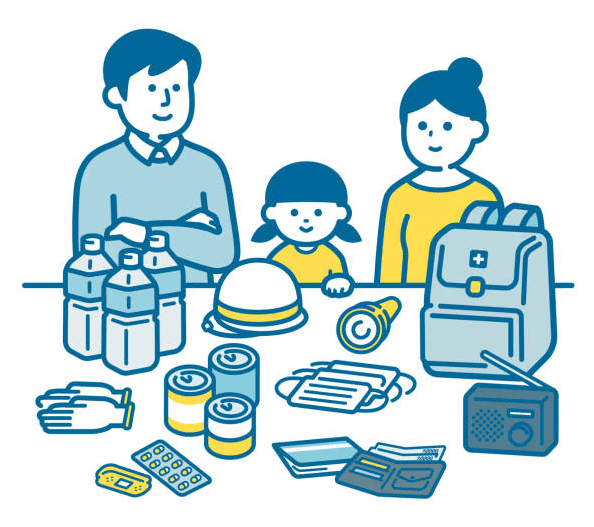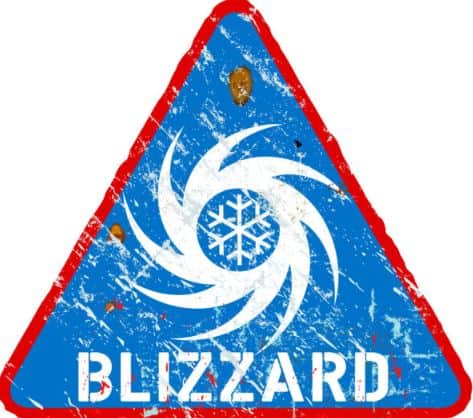How to Prepare for Volcanic Eruption in 2024
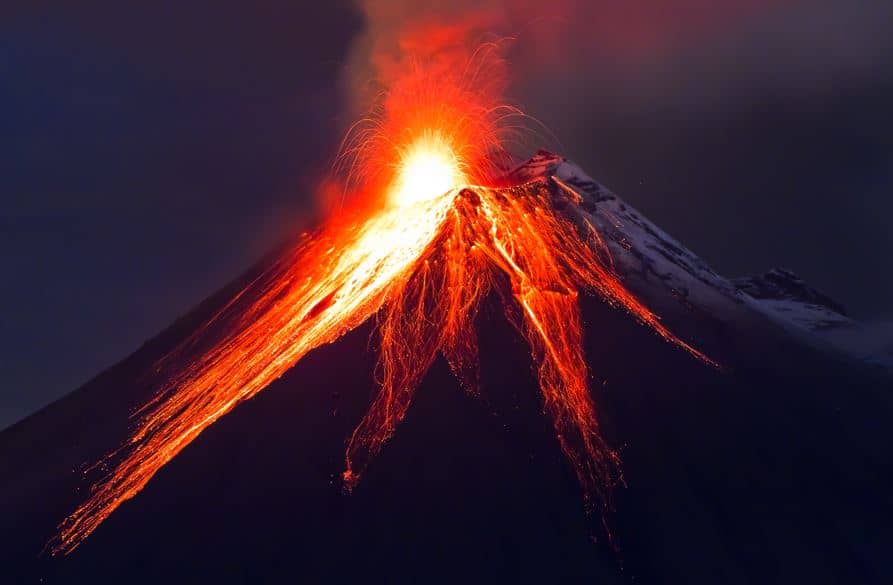
Did you know that several US regions have active volcanoes? States like Alaska, Oregon, Washington, Idaho, Wyoming, California, Hawaii, and even some US Territories like the Northern Mariana Islands and the American Samoa.
And have you ever wondered if a large enough volcanic eruption could affect the entire country? Just think about the fact that the 1980 eruption of Mount St. Helens spread ash across 11 US states.
Given the unpredictable fury of the Earth’s crust, an increasing amount of people have been trying to learn how to prepare for a volcanic eruption. I have studied this issue in depth, and prepared a meticulously crafted guide, so that you can master the knowledge needed to face challenges brought by volcanoes, like volcanic ash, toxic gases, and lava flow.
Whether facing ash fall from a distant volcano eruption, or living in the shadow of potentially active volcanoes, our guide was developed to offer you clarity and confidence.
Turn your concern into action with this set of easy and essential steps.
Understanding Volcanic Preparedness
A part of volcanic preparedness is about survival tactics, but it’s also about resilience against ash fallout, poisonous gases that filter through our homes, and unpredictable lava flows.
So we need a comprehensive approach, that integrates emergency supplies, coordination with local authorities, and adhering to advice from local officials to mitigate the impacts of volcanic eruptions.
The Imperative of Volcanic Preparedness
Whether a volcano erupts near you, or in some cases even quite far away, it is critical to be prepared.
Volcanic eruptions can drastically alter air quality, disrupt water supplies, and challenge our health, particularly for those with existing respiratory difficulties.
- Health and Safety: From heavy ash fall to poor air quality, the health implications demand our attention.
- Communication with Authorities: Local officials and the local government play key roles in issuing timely information and evacuation plans.
- Protection of Property: Volcanic ash makes surfaces slippery, can clog engines, stall vehicles, and infiltrate air conditioning systems, emphasizing the need for some proactive measures.
Our method not only prepares you for these eventualities but also positions you as a knowledgeable resource in your community.
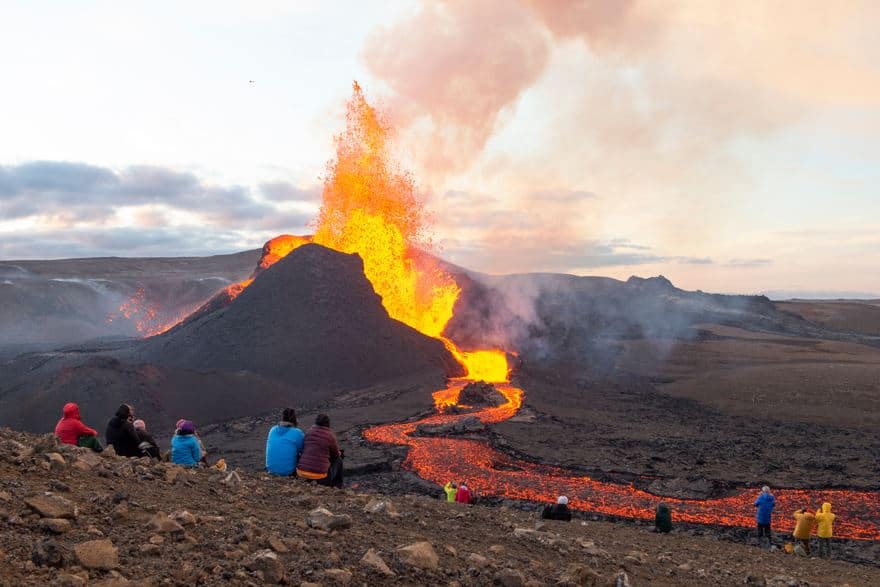
Step-by-Step Guide to Safeguarding Against Volcanic Eruptions
The road to preparedness involves not only intention, but most importantly it requires action. When faced with volcanic activity, being well-prepared can significantly mitigate risks to your health, property, and well-being.
This guide outlines practical steps to enhance your readiness for a volcanic event in order to increase the likelihood that you and your loved ones remain safe:
- Craft an Emergency Plan: Collaboration is key when forming an emergency response plan. Sit down with family members to discuss and agree on a comprehensive plan that addresses various scenarios. This plan should detail safe evacuation routes from your home and neighborhood, taking into consideration the possibility of blocked roads or hazardous conditions. Identify several meeting points, both close to home and further away, in case of separation during an evacuation. It should also include contact information for all involved, as well as for local emergency services, and be accessible to everyone in your household.
- Assemble Emergency Supplies: A well-stocked emergency supply kit is your frontline defense against the impacts of volcanic eruptions. Each family member should have a go-bag with a dust mask designed to filter toxic gases and ash particles, ensuring respiratory protection. There’s no need to invest in expensive maks, a simple N95 will do the trick. Include a water filter and ample water supplies — at least one gallon per person per day for at least three days — and a sufficient stock of non-perishable food items. Medical supplies are also important, including a first-aid kit, any prescription medications, and over-the-counter drugs like pain relievers and antihistamines. Don’t forget about specific needs of all family members, from infants to elderly individuals, and… pets. And make sure you carry essential documents.
- Stay Informed: Active engagement with local and state authorities’ updates is vital in staying ahead of volcanic threats. Modern technology offers various channels to receive timely information, including emergency alert systems on mobile phones, social media updates, local news broadcasts, and dedicated websites for disaster preparedness. These sources can offer insights into current volcanic activity levels, potential ash fall directions, lava flow paths, and crucial evacuation orders or advisories. Subscribing to alert services from geological surveys or local government agencies can provide real-time updates and advice, enabling you to make informed decisions swiftly.
- Understanding Volcanic Hazards: Familiarizing yourself with the types of hazards associated with volcanic eruptions can further enhance your preparedness. These hazards include lava flows, which can destroy everything in their path; pyroclastic flows, fast-moving currents of hot gas and volcanic matter; ash fall, which can affect air quality, contaminate water supplies, and cause respiratory issues; and lahars, or volcanic mudflows, which can bury structures and disrupt transportation. Knowing these hazards will help you tailor your emergency plan and supply kit to the specific risks you might face.
- Communication Plan: Your emergency plan should have a robust communication strategy. In times of disaster, cell phone networks and internet services might be overwhelmed or unavailable. Consider alternative communication methods such as satellite phones or walkie-talkies. Designate an out-of-town contact person who can act as a central point of communication among family members in case local communications fail.
- Regular Drills and Updates: Practice your evacuation plan regularly with all household members. Drills can help identify any weaknesses in your plan and familiarize everyone with evacuation routes and procedures, reducing panic and confusion during an actual emergency. Regularly review and update your emergency plan and supply kit to reflect any changes in your household or local risk assessments.
By following these expanded steps, you can create a robust defense against the unpredictable nature of volcanic eruptions. Bear in mind that preparation not only involves having the right supplies and knowledge, but also encouraging a proactive mindset that prioritizes safety and readiness at all times.

Navigating Through Ash and Gas
Understanding how to shelter indoors effectively during heavy ash fallout or when harmful gases permeate the air is also very important. Volcanic eruptions can release vast quantities of ash and toxic gases into the atmosphere, posing significant health hazards and disrupting daily life. Ensuring you and your loved ones remain safe during such events involves several key precautions.
Securing your home, particularly the air conditioning system, and limiting time outdoors can mitigate health risks. Start by sealing windows, doors, and any other openings with damp towels or adhesive tape to prevent ash and gases from entering. It’s also advisable to adjust your air conditioning system to recirculate indoor air, avoiding the intake of contaminated outdoor air. If possible, use air purifiers with HEPA filters to further clean the air inside your home.
Limiting time outdoors is also essential to reduce exposure to ash and harmful gases. When it’s absolutely necessary to go outside, wearing protective clothing such as long sleeves, pants, and goggles can help shield your skin and eyes from ash particles. A respiratory mask like an N95 respirator can offer protection against inhaling ash and toxic gases.
Preparing your home in advance for such scenarios can also be beneficial. Keep a supply of plastic sheeting and adhesive tape handy for quickly sealing off windows and doors. Regularly check the integrity of your home’s seals and the efficiency of your air conditioning filters to ensure they’re in good condition and ready for use when needed. Reinforcing the structural integrity of your home to withstand the weight of ashfall, ensuring that roofs and gutters are ash-resistant, and installing air filtration systems to maintain indoor air quality are all proactive steps that residents can take.
By taking these steps to navigate through ash and gas safely, you can protect your health and well-being during volcanic eruptions. Being prepared and knowledgeable about how to respond effectively can make all the difference in ensuring your safety in these challenging conditions.

Evacuation and Shelter
Understanding the critical importance of timely evacuation and finding appropriate shelter cannot be overstressed in the context of volcanic eruptions. Knowing precisely when to evacuate and where to find safe shelters that are operational is essential for safeguarding the well-being of you and your family during such unpredictable events.
Local officials and the local government play a pivotal role in guiding residents on the appropriate timing to vacate the danger zone. They utilize sophisticated monitoring systems and hazard assessments to determine the risk level to the community. Their advisories and orders are based on real-time data and are crucial for making informed decisions about when to leave. It is imperative for individuals and families to stay attuned to these official communications through various channels, including local news, radio broadcasts, and social media platforms, to receive timely updates on volcanic activity and evacuation orders.
The U.S. Geological Survey also provides a free Volcano Notification Service, with e-mail notifications issued by U.S. Volcano Observatories.
Living with Volcanoes
Living in proximity to potentially active volcanoes or in regions that are particularly vulnerable, such as low-lying areas susceptible to devastating lava flows and river valleys situated downstream from an active volcano, demands a heightened state of vigilance and a lifestyle deeply rooted in preparedness. This constant awareness and readiness to respond to volcanic threats can be the difference between safety and peril.
Adopting protective clothing is a fundamental precaution for individuals living in such areas. Wearing long-sleeved shirts, pants, and durable footwear can provide a basic yet effective barrier against volcanic ash, which can cause skin irritation, eye problems, and respiratory issues. Furthermore, when volcanic ash fills the air, using masks or respirators designed to filter particulate matter can protect the lungs from inhaling fine ash particles, reducing the risk of developing respiratory complications.
Critical Insights for Volcanic Preparedness
- Adaptability: Conditions can change with short notice, so staying flexible and informed is key.
- Community Engagement: Engaging with your community and local officials can enhance preparedness efforts.
- Health Precautions: For those with existing respiratory difficulties, additional precautions may be necessary to filter hazardous gases and cope with ash.
Beyond the Basics: Enhancing Your Preparedness
A more advanced level of preparedness for volcanic eruptions goes beyond the basic emergency kits and evacuation plans. It involves a comprehensive grasp of the behaviors and characteristics of volcanoes, a higher commitment to community involvement, and the utilization of cutting-edge technology to stay informed and safe.
If you live very close to active volcanoes, understanding the nuances of volcanic action can be crucial. Pyroclastic flows, for instance, are fast-moving currents of hot gas and volcanic materials that can travel down the slopes of a volcano at high speeds, destroying everything in their path. If you are able to recognize the signs that might precede such events, such as significant increases in seismic activity or changes in gas emissions, you can gain critical lead time for evacuation. Similarly, the slow yet destructive nature of lava flows demands awareness of the topography around your house to predict possible paths and prepare accordingly.
Moreover, the environmental impact of molten rock and ash extends beyond immediate physical dangers. Ash can contaminate water supplies, disrupt agriculture by burying crops, and cause long-term respiratory issues for both humans and animals. A deeper understanding of these effects can inform more comprehensive preparedness strategies, including the stockpiling of water filters, air purifiers, and protective coverings for crops and livestock.
Community drills may also play a pivotal role in enhancing preparedness. Participating in or organizing regular drills that simulate different aspects of volcanic eruptions can help individuals and communities refine their response strategies, ensuring that when a real event occurs, everyone knows how to act swiftly and efficiently. These drills also offer a platform for identifying potential weaknesses in current plans and fostering a spirit of solidarity and mutual assistance among community members.
Advocating for robust preparedness education is another key element. Working with local schools, community centers, and online platforms to disseminate knowledge about volcanic hazards and preparedness can elevate the entire community’s ability to respond to eruptions. Education initiatives can range from workshops and seminars to interactive online courses and social media campaigns, all aimed at increasing public awareness and understanding of volcanic risks.
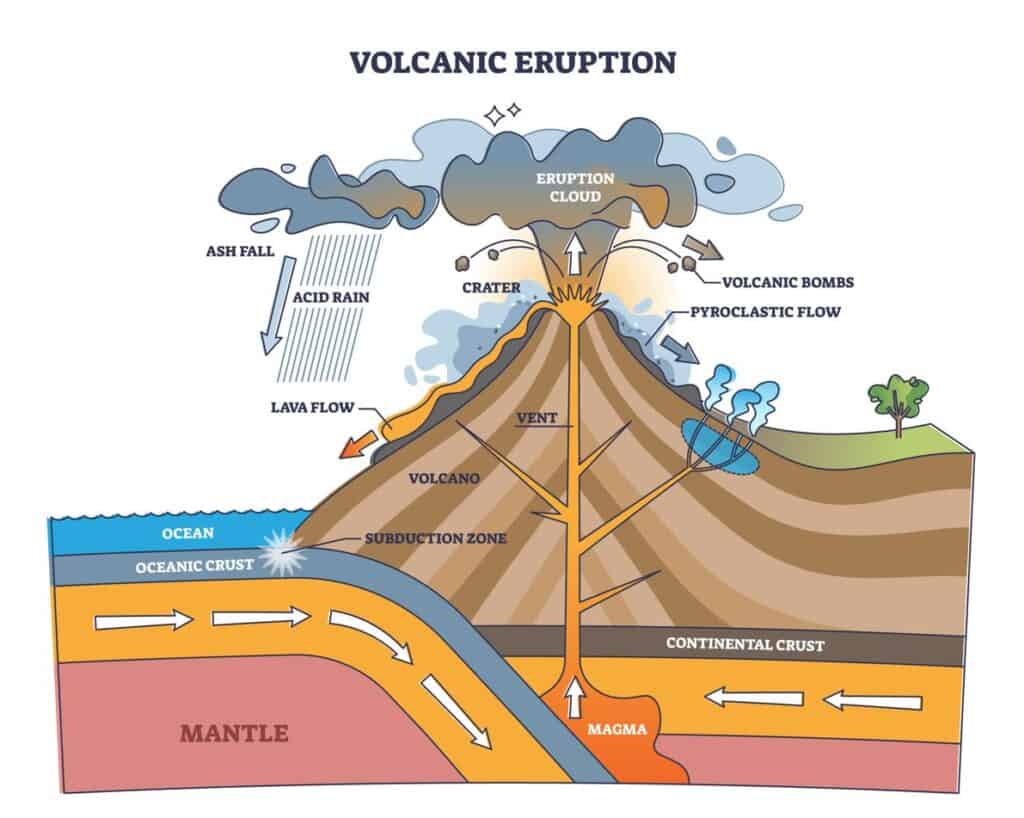
Alternatives to Individual Preparedness
In the world of disaster preparedness, particularly when it concerns volcanic eruptions, individual actions can be very important. However, the foundation of truly effective preparedness is built on the pillars of community resilience and government-led initiatives. These collective efforts are vital in organizing a coordinated response to volcanic threats, significantly enhancing the safety and well-being of the broader population.
On a larger scale, government initiatives are critical in providing the infrastructure and resources needed for comprehensive disaster preparedness. This includes the development and maintenance of robust early warning systems that utilize the latest in seismic technology and satellite imagery to monitor volcanic activity. These systems can detect subtle changes in a volcano’s behavior, offering precious time for evacuation and response efforts before an eruption occurs.
Constructing shelters specifically designed to withstand the unique challenges posed by volcanic eruptions is another area where government action is also paramount. These shelters need to be capable of protecting occupants from ash fallout, which can collapse roofs and contaminate air and water supplies, as well as from potential flash floods triggered by the rapid melting of snow and ice on a volcano’s summit. Strategic placement of these shelters is also critical, so that they are both accessible to those in high-risk areas and situated safely away from the direct paths of lava flows and pyroclastic flows.
Furthermore, governments can facilitate the creation of buffer zones around particularly dangerous volcanoes, limiting development in areas most at risk of lava flows, pyroclastic flows, and lahars. By regulating land use and implementing zoning laws, the potential impact on human life and property can be significantly reduced. These measures, however, must be balanced with the needs of the community, ensuring that economic and social well-being is maintained.
Collaborative efforts between communities and governments are also essential in planning and executing evacuation drills. These drills, when conducted regularly, can help familiarize residents with evacuation routes and procedures, reducing panic and confusion during actual evacuations. They also provide an opportunity to test the efficacy of communication channels and emergency services, allowing for adjustments and improvements to be made.
In conclusion, while individual preparedness is a critical component of disaster resilience, the complexities of responding to volcanic eruptions necessitate a broader approach. The synergy between community efforts and government initiatives offers a comprehensive framework for preparedness, ensuring that communities stand ready to face the challenge collectively, minimizing the impact on human life and infrastructure.
Conclusion: The Journey Ahead
Preparing for a volcanic eruption is an ongoing process that requires vigilance, knowledge, and a commitment to safety.
We are here to guide you through each step, ensuring you and your loved ones can face volcanic activity with assurance.
By adopting these practices, staying informed through local authorities, and fostering a community of preparedness, we can navigate the challenges posed by volcanoes with confidence and resilience.
Remember, in the face of an erupting volcano, preparedness is our most powerful tool.
Check out our other blog posts, and reach out if you feel like it.
FAQ – Frequently Asked Questions
Where in the world is there an increased risk of volcanic activity?

Check the map and this website: https://volcanichazardmaps.org/
What are some of the most critical items for volcanic eruption preparedness?
Closed water supplies, water filters, N95 masks, adhesive tape, an air purifier and walkie-talkies.




